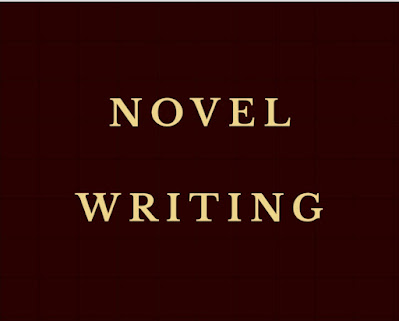Mastering the Art of Novel Writing: Key Details for Crafting a Compelling Story
by Olivia Salter
Writing a truly good novel is a complex and rewarding endeavor. It requires a balance of seeing the big picture while meticulously managing countless details. From conceptualizing the overarching story to breaking it down into a coherent structure and developing compelling character arcs, each element plays a crucial role. Here's a guide to mastering these key aspects of novel writing.
The Big Story: Vision and Concept
- Develop a Strong Premise: Your novel’s premise is the foundation of your story. It should be clear, compelling, and intriguing. Ask yourself: What is the core idea or conflict driving the narrative? A strong premise will guide your plot and keep you focused.
- Understand Your Theme: The theme is the underlying message or insight your novel conveys. It adds depth and meaning to your story. Identifying your theme early on helps ensure your narrative stays cohesive and resonates with readers.
- Outline the Plot: A well-structured plot is essential for maintaining momentum and reader interest. Outline the major events and turning points in your story. This roadmap will help you navigate the narrative and avoid plot holes or inconsistencies.
Breaking Down the Story: Structure and Pacing
- Master Story Structure: Familiarize yourself with common story structures, such as the three-act structure, the Hero’s Journey, or the Freytag Pyramid. These frameworks provide a blueprint for organizing your narrative into a beginning, middle, and end.
- Pacing and Rhythm: Keep your readers engaged by managing the pacing of your story. Alternate between high-tension scenes and quieter moments to create a rhythm that sustains interest. Ensure each scene advances the plot or deepens character development.
- Crafting Scenes and Chapters: Each scene should have a clear purpose, contributing to the overall story. Chapters should end with hooks or questions to encourage readers to keep turning the pages. Balance scene length to maintain a dynamic flow.
Character Arcs: Development and Transformation
- Create Complex Characters: Develop multi-dimensional characters with distinct personalities, motivations, and flaws. They should feel real and relatable, with clear goals driving their actions. Readers should care about what happens to them.
- Plan Character Arcs: Characters should evolve over the course of your novel. Define their starting point, the challenges they face, and their transformation by the end. Effective character arcs add emotional depth and keep readers invested.
- Show, Don’t Tell: Reveal character traits and changes through actions, dialogue, and interactions rather than exposition. This approach makes the character development more organic and engaging for readers.
Additional Details to Hone
- Dialogue: Write authentic and purposeful dialogue that reflects your characters’ personalities and advances the plot. Avoid long-winded conversations and ensure each line serves a function.
- Setting and World-Building: Create immersive settings that enhance your story. Use vivid descriptions to bring your world to life, making it a character in its own right. Consistency in your world-building details is crucial for maintaining believability.
- Point of View and Narrative Voice: Choose the right point of view (POV) for your story, whether first person, third person, or omniscient. Your narrative voice should be consistent and suited to the tone and style of your novel.
Practical Steps for Writing Success
- Set Goals and Deadlines: Establish a writing schedule with clear goals and deadlines. Consistency is key to making steady progress on your novel.
- Revise and Edit: Writing a novel is a marathon, not a sprint. After completing your first draft, take time to revise and polish your manuscript. Seek feedback from beta readers or critique groups to identify areas for improvement.
- Read Widely and Study Craft: Immerse yourself in the genre you’re writing. Read widely to understand different styles and techniques. Studying the craft of writing through books, workshops, and courses can provide valuable insights and skills.
In conclusion, writing a really good novel involves mastering numerous details, from envisioning the big story to structuring your plot and developing rich character arcs. By focusing on these key elements and honing your skills, you can create a compelling and memorable narrative. Remember, writing a novel is a journey that requires dedication, patience, and a passion for storytelling. Embrace the process, and let your creativity guide you.
Also see:
- Novel Writing Books at Amazon
- K. M. Weiland Books at Amazon (Excellent books to read for aspiring authors. )



No comments:
Post a Comment